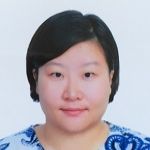Herbal Carbohydrates: Chemistry, Biology and Application
A special issue of Molecules (ISSN 1420-3049). This special issue belongs to the section "Natural Products Chemistry".
Deadline for manuscript submissions: closed (31 March 2019) | Viewed by 10633
Special Issue Editors
Interests: sustainable utilization of natural resources and quality control of Chinese medicines; study on food and medicine dual purposes Chinese medicines; laboratory standard information management
Interests: herbal glyco-analysis; quality control methods and standards development of Chinese medicines; study of edible and medicinal mushroom
Special Issues, Collections and Topics in MDPI journals
Special Issue Information
Dear Colleagues,
Herbal medicine is becoming more and more popular around the world, with the trend of “back to nature”. How carbohydrates contribute to phyto-therapeutic effects is still not clear, though carbohydrates from herbal medicines have a variety of bioactive activities in many cases. In order to improve the research on carbohydrates, the Special Issues, “Polysaccharides: Organic Chemistry, Bioactivity and Analysis, including Those from Medicinal Plants and Fungi” and “Natural Polysaccharides: Chemistry, Bioactivity and Analysis”, were published in Molecules in 2008 and 2012, respectively.
In the last few years, the technologies for studying the structure, chemistry, biosynthesis, and biological functions of carbohydrates and their derivatives have been developed rapidly and have been successfully employed in glycoscience. To present the current status of research in this field, an updated Special Issue, “Herbal Carbohydrates: Chemistry, Biology and Application”, will be published in 2019. This work will improve the multidisciplinary expertise of industry, academia and research institutions and will communicate knowledge on glycoscience and exchange information on basic and applied areas for the development of innovative products of carbohydrates.
Contributions for this issue, both in form of original research and review articles, are welcome. They may cover all aspects of glycoscience, including chemistry, biology and application of herbal carbohydrates.
Assoc. Prof. Jing Zhao
Prof. Shaoping Li
Guest Editors
Manuscript Submission Information
Manuscripts should be submitted online at www.mdpi.com by registering and logging in to this website. Once you are registered, click here to go to the submission form. Manuscripts can be submitted until the deadline. All submissions that pass pre-check are peer-reviewed. Accepted papers will be published continuously in the journal (as soon as accepted) and will be listed together on the special issue website. Research articles, review articles as well as short communications are invited. For planned papers, a title and short abstract (about 100 words) can be sent to the Editorial Office for announcement on this website.
Submitted manuscripts should not have been published previously, nor be under consideration for publication elsewhere (except conference proceedings papers). All manuscripts are thoroughly refereed through a single-blind peer-review process. A guide for authors and other relevant information for submission of manuscripts is available on the Instructions for Authors page. Molecules is an international peer-reviewed open access semimonthly journal published by MDPI.
Please visit the Instructions for Authors page before submitting a manuscript. The Article Processing Charge (APC) for publication in this open access journal is 2700 CHF (Swiss Francs). Submitted papers should be well formatted and use good English. Authors may use MDPI's English editing service prior to publication or during author revisions.
Keywords
- Herb medicine
- Analysis
- Application
- Bioassay
- Biomaterials
- Carbohydrates
- Chemistry
- Chinese medicines
- Glycobiology
- Glycomics
- Pharmacological activity
- Medicinal plant
- Mushroom







